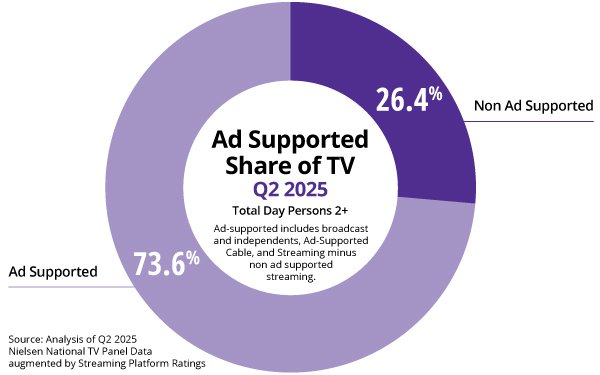
Second-quarter ad-supported total day
viewing for persons age two and up -- on linear and streaming TV platforms -- grew 2% (1.2 share points) in the second quarter to 73.6% from the first quarter, according to Nielsen.
Specifically, ad-supported streaming grew 7% (2.9 share points) to 45.3% share.
Streaming platforms gained from new seasons of popular shows such as Peacock’s “Love Island
USA” and Netflix’s “Squid Game” and “Ginny & Georgia.”
Broadcast ad-supported viewing dropped 16% (down 2.7 share points) to 26.0% share (28.7% in the
first quarter).
Ad-supported cable slipped by half of broadcast’s decline -- 8% (down 0.2 share points) -- to 28.7% share (28.6%, the first quarter).
Cable TV ad-viewing was
helped in the quarter by strong news content in the period, with additional high viewing from the NBA playoffs.
Total ad-free TV/streaming fell 4% to 26.4% share (27.6% in the first
quarter).
Overall viewing -- ad-free and ad supported-- was down 9% in the second quarter compared to the first quarter.
Nielsen’s ad-supported measure, which comes from national
TV panel data with streaming platform rating, was initially released for the first quarter of 2025.
advertisement
advertisement